4.1 Classical Conditioning
1
What is a reflex, and how can it change through habituation?
Classical conditioning is a learning process that creates new reflexes. A reflex is a simple, relatively automatic, stimulus-response sequence mediated by the nervous system. If your knee is tapped with a rubber mallet as you sit on an examining table, your lower leg will jerk forward. If a bright light is flashed in your eyes, you will blink. If lemon juice is squirted into your mouth, you will salivate. If a loud alarm suddenly clangs, your muscles will tighten. In each of these examples, a particular well-defined event in the environment, a stimulus, results in a particular well-defined behavior, a response. The tap on the knee, the flash of light, the squirt of lemon juice, and the sudden alarm are stimuli (note that stimuli is the plural form of stimulus). The leg jerk, the eye blink, the salivation, and the muscle tightening are responses.
To be considered a reflex, the response to a stimulus must be mediated by the nervous system. Messages carried by nerves from the eyes, ears, skin, or other sensory organs enter the spinal cord or brain and act there to produce messages in nerves running outward to muscles and glands. If something hits you and you fall down as a result of the direct force of the impact, that is not a reflex. If something hits you and your muscles respond in a way that tends to keep you from falling down, that is a reflex. Because reflexes are mediated by the nervous system, they can be modified by experience.
One simple effect of experience on reflexes is habituation, defined as a decline in the magnitude of a reflexive response when the stimulus is repeated several times in succession. Not all reflexes undergo habituation. One that does is the startle response to a sudden loud sound. You might jump the first time the sound occurs, but each time the sound is repeated and nothing bad happens, you respond less, and soon you show no visible response at all. Habituation is one of the simplest forms of learning. It does not produce a new stimulus-response sequence but only weakens an already existing one. Classical conditioning, in contrast, is a form of reflex learning that does produce a new stimulus-response sequence. It was first described and most extensively studied by a Russian physiologist, Ivan Pavlov.
Fundamentals of Classical Conditioning
Like many innovations in science, the discovery of classical conditioning was accidental. Its discoverer was not looking to explain a major form of learning, but rather was interested in reflexes involved in digestion. In fact, Ivan Petrovich Pavlov (1849–1936) received the 1904 Nobel Prize in Physiology and Medicine for his work on digestive reflexes in dogs before he turned his attention to learning.
Pavlov’s Initial Discovery of Classical Conditioning
2
How did Pavlov discover the conditioned response?
Pavlov’s initial discovery of what we now call classical conditioning emerged from his earlier studies of digestive reflexes in dogs. Using permanently implanted tubes to collect salivary and stomach juices from dogs (see Figure 4.1), he and his team of researchers found, for example, that a dog salivates differently when different kinds of food are placed in its mouth. Juicy meat triggers a very thick saliva; dry bread, a wetter saliva; and acidic fluids, a wetter one yet. In a fine-grained analysis, these represent three different reflexes, with three different stimuli eliciting measurably different salivary secretions.
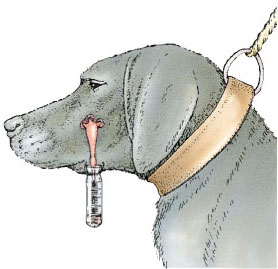
103
In the course of these studies, Pavlov encountered a problem. Dogs that had been given food on previous occasions in his experiments would salivate before they received any food. Apparently, signals that regularly preceded food, such as the sight of the food or the sound associated with its delivery, alerted the dogs to the upcoming stimulation and caused them to salivate. At first Pavlov was content to treat this simply as a source of experimental error. He called it “psychic secretion,” implying that it was outside the physiologist’s realm of study, and he attempted to eliminate it by developing ways to introduce the food into the dog’s mouth without any warning. But then it occurred to Pavlov that this might well be a phenomenon that could be studied physiologically. Rather than call it psychic secretion, perhaps he could consider it a reflex and analyze it objectively, just as he had analyzed the reflexive salivary response to food in the mouth. This insight led Pavlov (1927/1960) to his first experiments on conditioned reflexes.
The Procedure and Generality of Classical Conditioning
3
After his initial discovery, how did Pavlov systematize the process of conditioning, and what names did he give to the relevant stimuli and responses?
To study such reflexes, Pavlov deliberately controlled the signals that preceded food. In one experiment he sounded a bell just before placing food in the dog’s mouth. After several such pairings of a bell with food, the dog would salivate in response to the bell sound alone; no food was necessary. Pavlov referred to the stimulus (the bell sound, in this case) as a conditioned stimulus, and he referred to the response to that stimulus (salivation) as a conditioned response. Likewise, the original stimulus (food placed in the mouth) and response (salivation) are referred to as an unconditioned stimulus and unconditioned response, respectively.
For a diagram of Pavlov’s basic procedure and an opportunity to review all of these terms, see Figure 4.2. The procedure today is called classical conditioning, or sometimes Pavlovian conditioning.
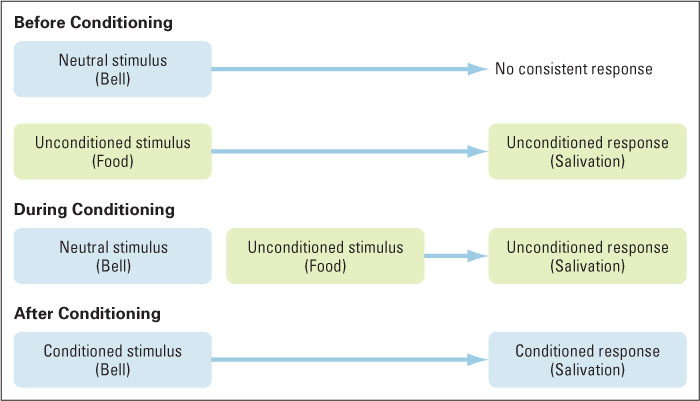
Pavlov (1927/1960) was impressed in these studies by the similarity between the dog’s salivary response to a conditioned stimulus and its response to the unconditioned stimulus. A sound that had been paired with meat elicited a thick saliva, similar to that elicited by meat; and a sound that had been paired with bread elicited a thinner, wetter saliva, similar to that elicited by bread. In other experiments, Pavlov and his colleagues varied the stimuli used as the conditioned stimulus. They concluded that, essentially, any environmental event that the animal could detect could become a conditioned stimulus for salivation. Sounds produced by bells, buzzers, or tuning forks were highly effective and used most often because they were the easiest to control. But Pavlov’s group also produced conditioned responses to visual stimuli, such as a black square; to olfactory stimuli, such as the odor of camphor; and to tactile (touch) stimuli, such as pressure applied to a spot on the animal’s skin. In each case, the stimulus initially did not elicit the salivary response, but it did so after having been paired with food a number of times.
104
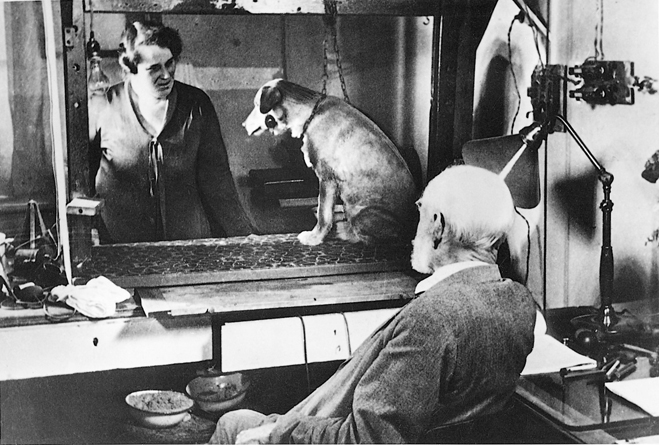
Of course, classical conditioning is not limited to salivary responses. Researchers have demonstrated this in hundreds of laboratory experiments, and you have experienced countless examples of such conditioning in your everyday life. The sound of a dentist’s drill may elicit a conditioned cringing response because of its previous pairing with pain. The mere smell of coffee may help wake you up because of its previous pairing with coffee’s stimulating effect. The sight of the toilet when you enter a bathroom to comb your hair may elicit a previously unfelt urge to urinate due to previous pairings of that sight with that urge. If you once had an automobile accident at a curve in the road on a wet day, each new encounter with such a curve on such a day may elicit a conditioned tensing of muscles. If you go through a day recording instances of conditioned responses, you will find that the list quickly becomes quite long.
Extinction of Conditioned Responses, and Recovery from Extinction

4
How can a conditioned response be extinguished? What evidence led Pavlov and others to conclude that extinction does not return the animal to its original, untrained state?
One question that interested Pavlov had to do with the permanence of a conditioned response. Once a dog has learned to salivate to the sound of a bell, does this reflex continue to occur if the bell is sounded for many trials without the unconditioned food-in-mouth stimulus? Pavlov’s group found that without food, the bell elicited less and less salivation on each trial and eventually none at all, a phenomenon they labeled extinction. But they also found that extinction does not return the animal fully to the unconditioned state. The mere passage of time following extinction can partially renew the conditioned response, a phenomenon now known as spontaneous recovery (see Figure 4.3). Moreover, a single pairing of the conditioned stimulus with the unconditioned stimulus can fully renew the conditioned response, which can be extinguished again only by another series of trials in which the conditioned stimulus is presented without the unconditioned stimulus.
On the basis of such findings, Pavlov concluded that the conditioned response is not truly lost during extinction, but is somehow inhibited, and that it can be disinhibited by such means as the passage of time or the recurrence of the unconditioned stimulus. This conclusion has been validated in many experiments since Pavlov’s time (Bouton et al., 2006). In research with conditioned eye-blink reflexes in rabbits, researchers have shown that conditioning and extinction involve different sets of neurons (nerve cells) in the brain (Medina et al., 2002). Neurons involved in the conditioning of this response excite other neurons that promote eye blinking. Neurons involved in extinction inhibit those same eye-blink neurons, thereby counteracting but not abolishing the conditioned neural response, just as Pavlov would have predicted.
105
Generalization and Discrimination in Classical Conditioning
Pavlov and his colleagues found that, after conditioning, animals would show the conditioned response not just to the original conditioned stimulus but also to new stimuli that resembled that stimulus. This phenomenon is called generalization. They found, further, that the magnitude of the response to the new stimulus depended on the degree of similarity between the new stimulus and the original conditioned stimulus. Thus, a dog conditioned to salivate to a 1,000-hertz (cycles-per-second) tone also salivated to tones of other frequencies, but the further the tone’s frequency was from the original conditioned stimulus, the less the dog salivated to it.
5
How can generalization in classical conditioning be abolished through discrimination training? How can discrimination training be used to assess an animal’s sensory capacities?
Generalization between two stimuli can be abolished if the response to one is reinforced while the response to the other is extinguished, a procedure called discrimination training. As an example of this procedure, Pavlov’s group used a dog whose conditioning to the sight of a black square had generalized to a gray square. After a series of trials in which presentations of the gray square were never followed by food and presentations of the black square were always followed by food, the dog stopped salivating to the gray square but continued to salivate to the black one. The researchers continued this procedure with ever-darker shades of gray, until they eventually conditioned the dog to discriminate a black square from a gray one that was so nearly black that a human observer had difficulty telling them apart (Pavlov, 1927/1960).
Generalization as an Index of Subjective Similarity
6
How have researchers shown that the meaning of a stimulus, not just its physical characteristics, can provide a basis for generalization in classical conditioning?
In experiments with human subjects, researchers following Pavlov discovered that generalization occurs not just when two stimuli are physically similar to one another but also when they are similar in their subjective meaning to the person.
In one experiment, Gregory Razran (1939) used college students as subjects, printed words as conditioned stimuli, and a squirt of lemon juice into the mouth as the unconditioned stimulus. By pairing each word with lemon juice, Razran conditioned students to salivate to the words style, urn, freeze, and surf. He then tested the students to see if the conditioned response would generalize to other words that had never been paired with lemon juice. Of most interest, he found that the students salivated more to the words fashion, vase, chill, and wave than to the words stile, earn, frieze, and serf. That is, the conditioned response generalized more to printed words that resembled the original conditioned stimuli in meaning than to those that resembled the originals in physical appearance or sound. Thus, the true conditioned stimuli in this case were not the physical sights or sounds of the words but the subjects’ interpretations of them.
An even more dramatic demonstration of stimulus generalization based on word meaning comes from the work of a Soviet psychologist (Volkova, 1953). A Russian schoolboy was conditioned to salivate to the Russian word for “good” and, by discrimination training, not to salivate to the word for “bad.” When the discrimination was well established, the boy was found to salivate copiously to such statements as The Soviet army was victorious and not at all to statements such as The pupil was rude to the teacher. In other words, those statements that the boy interpreted as good elicited salivation, and those that he interpreted as bad did not. A child who had a different set of conceptions of what is good or bad might have shown the opposite pattern of salivation. Thus, although classical conditioning is a very primitive phenomenon, it can be applied even toward understanding such uniquely human characteristics as a person’s attitudes about particular verbally described events.
106
Relevance of Pavlov’s Work to the Emergence of Behaviorism
7
What were the characteristics of early North American behaviorism? Why were Pavlov’s findings on conditioning particularly appealing to behaviorists?
Early in the twentieth century, psychologists in North America were struggling to develop scientific methods appropriate for psychology. Some of these psychologists, who referred to their school of thought as behaviorism, argued that their science should avoid terms that refer to mental entities, such as thoughts, emotions, motives, and so on, because such entities cannot be directly observed. They believed that psychology should focus on the relationship between observable events in the environment (stimuli) and observable behavioral reactions to those events (responses). However, this does not mean that behaviorism does not address complex human behavior such as cognition and language, only that it is addressed from a behavioral perspective.
The principal founder of behaviorism, John B. Watson (1913), put it this way: “In a system of psychology completely worked out, given the response the stimuli can be predicted, and given the stimuli the response can be predicted.” In Watson’s view, all of behavior is, in essence, reflex-like in nature. Watson did not deny the existence of mental processes, but he believed that these are too obscure to be studied scientifically and argued that behavior could be understood and described without reference to mental processes.
In addition to developing objective, stimulus-response descriptions of behavior, the early behaviorists established learning as their main explanatory concept. They maintained that a person’s behavior at any given time is determined by that person’s past experiences with the environment. Watson and the other early behaviorists were much inspired by Pavlov’s work on conditioning. In contrast to the empiricist philosophers (discussed in Chapter 1), who talked about learning in terms of unseen associations occurring in the mind, Pavlov seemed to provide an objective, stimulus-response way of studying and understanding learning. If all behavior is essentially reflexive, and if most behavior is learned, and if conditioning is the process by which reflexes are learned, then conditioning would appear to be psychology’s most basic explanatory concept. In one of his early books, Watson (1924) attempted to describe even complex examples of human learning in terms of what we now call classical conditioning.
What Is Learned in Classical Conditioning?
We now return to the question raised earlier: What, really, is learned in classical conditioning? Watson’s (1924) and other early behaviorists’ answer to that question was simply that a new stimulus-response connection is learned. From their perspective, Pavlov’s conditioned dog salivated to the bell sounding because of a direct, learned connection between that sound and salivation. This stimulus-response (S-R) theory of classical conditioning is diagrammed in the top part of Figure 4.4. Pavlov himself, however, had a different theory.
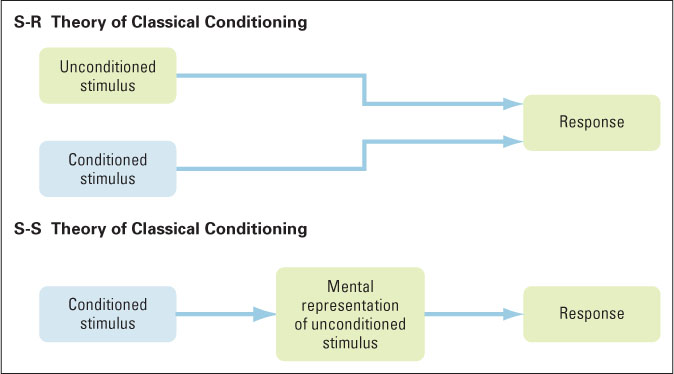
S-R theory, conditioning produces a direct bond between the conditioned stimulus and the response. According to the S-S theory, conditioning produces a bond between the conditioned stimulus and a mental representation of the unconditioned stimulus, which, in turn, produces the response. Support for the S-S theory comes from experiments showing that weakening the unconditioned response (through habituation), after conditioning, also weakens the conditioned response.
Evidence That Stimulus-Stimulus Associations Are Learned
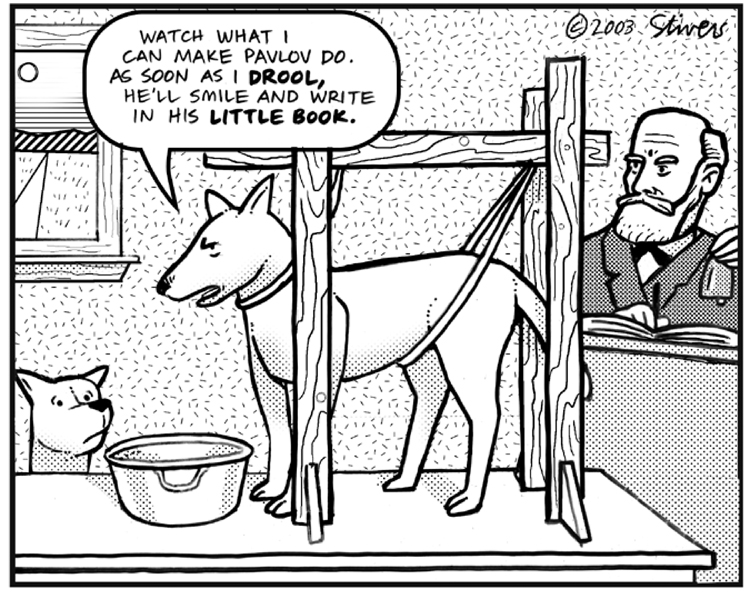
Pavlov (1927/1960) believed that the animal does not learn a direct stimulus-response connection but, rather, learns a connection between two stimuli—the conditioned stimulus and the unconditioned stimulus. Because the bell and food have been paired in past experience, a neural bond is formed between their representations in the brain such that the sound of the bell now activates the part of the brain that was formerly activated by food, and that, in turn, elicits salivation. Using mental rather than neural terms, we could say that the dog salivates to the bell because the bell sound elicits in the dog a mental representation of food (bell → mental representation of food → salivation). This stimulus-stimulus (S-S) theory of classical conditioning is illustrated in the bottom part of Figure 4.4.
107
The S-S theory did not appeal to Watson and his followers because it posited the existence of an unobserved event in the animal’s mind, the mental representation of the original unconditioned stimulus. However, contrary to the early behaviorists’ claims, reference to unseen events can be very useful in science if they lead to clear-cut predictions about events that can be seen. Gravity cannot be seen, yet theories of gravity can be developed and tested with experiments on falling objects. The S-S and S-R theories make different predictions about how animals will behave under certain conditions, so it is possible to test the theories with experiments. Many such experiments have been conducted by now, and the weight of the evidence favors the S-S theory for most examples of conditioning in mammals and birds (Anderson, 2000).
8
How did Pavlov’s S-S theory of classical conditioning differ from Watson’s S-R theory? How does an experiment involving habituation of the unconditioned stimulus support the S-S theory?
Consider a classic experiment conducted by Robert Rescorla (1973) using rats as subjects, a loud sound as the unconditioned stimulus, and a signal light as the conditioned stimulus. The loud sound elicited “freezing” (a fear response in which the rat stands motionless) as an unconditioned response. By pairing the signal light with the loud sound, Rescorla conditioned rats to freeze when the signal light came on. Now, the question was: Did the rats freeze in response to the signal light because of a direct, learned connection between the light and freezing, in accordance with the S-R theory (light → freezing)? Or did they freeze because of a learned connection between the light and the loud sound, in accordance with the S-S theory (light → mental representation of loud sound → freezing)?
To answer the question, Rescorla habituated the response to the loud sound in half of the conditioned rats. That is, he presented the loud sound many times without the signal light until the rats no longer froze in response to it. Then he again tested the rats with the signal light. Would the rats that no longer froze in response to the loud sound continue to freeze in response to the light? The S-R and S-S theories make different predictions. According to the S-R theory, the habituated rats should continue, as much as before, to freeze in response to the light because conditioning would have produced a direct connection between the light and freezing. But according to the S-S theory, the habituated rats should not freeze in response to the light because conditioning would have produced a connection between the light and a representation of the loud sound, which itself no longer elicits freezing. Rescorla’s results supported the S-S theory. Habituation to the sound greatly reduced the degree to which the rats froze in response to the light.
Classical Conditioning Interpreted as Learned Expectancy
9
How does the cognitive construct of expectancy help explain the ways in which conditioned responses differ from unconditioned responses?
The S-S theory of classical conditioning, by its nature, is more cognitive than the S-R theory. As explained in Chapter 1, the term cognition refers to knowledge, or information, held in the mind. Cognitive theories are theories in which hypothesized, unobserved entities within the mind are used to explain and predict behavior, contrary to the dictates of behaviorism. The S-S theory is cognitive because it holds that the observed stimulus-response relation is mediated by an inner, mental representation of the original unconditioned stimulus. Cognitive theorists have argued that this mental representation may be best understood as an expectation of the unconditioned stimulus. According to this view, Pavlov’s dog learned to expect food when it heard the bell.
108

Expectancy theory helps make sense of the observation that a conditioned response is often quite different from the unconditioned response. Consider again a dog being conditioned to a sounding bell that precedes food. In response to food, the dog not only salivates but also chews (if it is solid food) and swallows. Salivation becomes conditioned to the bell, but chewing and swallowing usually do not. Moreover, the bell comes to elicit not only salivation but also responses that do not usually occur in response to the food-in-mouth stimulus—such as tail wagging, food begging, and looking in the direction of the usual source of food (Jenkins et al., 1978). According to expectancy theory, all these responses, including salivation, occur not because they were previously elicited by the unconditioned stimulus but because they are the dog’s responses to the expectation of food:
bell → expectation of food → tail wagging, food begging, salivation, etc.
Rescorla summed up his cognitive view of classical conditioning as follows: “[Classical] conditioning is not a stupid process by which the organism willy-nilly forms associations between any two stimuli that happen to co-occur. Rather, the organism is best seen as an information seeker using logical and perceptual relations among events, along with its own preconceptions, to form a sophisticated representation of its world” (1988, p. 154). By this, Rescorla does not mean that animals spend time consciously deliberating about these relationships. Rather, he means that animals have built-in neural mechanisms that automatically make the appropriate calculations.
Conditioning Depends on the Predictive Value of the Conditioned Stimulus
10
What are three conditions in which the pairing of a new stimulus with an unconditioned stimulus does not result in classical conditioning? How do these observations support the idea that classical conditioning is a process of learning to predict the onset of the unconditioned stimulus?
Support for the expectancy theory of classical conditioning comes from research showing that conditioning occurs only, or at least mainly, when the new stimulus provides information that truly helps the animal predict the arrival of the unconditioned stimulus. Here are three classes of such findings:
- The conditioned stimulus must precede the unconditioned stimulus. Classical conditioning is most effective if the onset of the conditioned stimulus comes immediately before the unconditioned stimulus. Conditioning commonly doesn’t occur at all if the conditioned stimulus comes either simultaneously with or just after the unconditioned stimulus (Lieberman, 2000). (See Figure 4.5a and Figure 4.5b.) This observation makes sense if the animal is seeking predictive information; a stimulus that does not precede the unconditioned stimulus is useless as a predictor and thus is ignored by the animal. Trying to achieve conditioning by placing the conditioned stimulus after the unconditioned stimulus is like trying to reduce traffic accidents by placing “Dangerous Curve” signs after the curves in the road rather than before them.
- The conditioned stimulus must signal heightened probability of occurrence of the unconditioned stimulus. Conditioning depends not just on the total number of pairings of the conditioned stimulus and unconditioned stimulus, but also on the number of times that either stimulus occurs without being paired with the other. As the number of pairings increases, conditioning is strengthened; but as the number of stimulus occurrences without pairing increases, conditioning is weakened (Rescorla, 1988; Rescorla & Wagner, 1972). (See Figure 4.5c.) The animal’s behavior suggests that in some way its nervous system computes two probabilities—the probability that the unconditioned stimulus will immediately follow any given occurrence of the conditioned stimulus and the probability that the unconditioned stimulus will occur at other times—and accepts the conditioned stimulus as a predictor only if the first probability is greater than the second.
If dangerous curves in the road are no more likely to occur right after “Dangerous Curve” signs than they are to occur in the absence of such signs, the signs would be useless to us as predictors of curves, and we would be well advised to ignore them and try to predict curves using other means. This would be true no matter how many times, in our driving experience, we happened to come across such a sign right before an actual curve. Rats in conditioning experiments behave as if they have that insight. - Conditioning is ineffective when the animal already has a good predictor. If one conditioned stimulus already reliably precedes an unconditioned stimulus, a new stimulus, presented simultaneously with the original conditioned stimulus, generally does not become a conditioned stimulus. Even after many such pairings the new stimulus fails to elicit the conditioned response if it is presented alone. This failure of conditioning is called the blocking effect; the already-conditioned stimulus blocks conditioning to the new stimulus that has been paired with it (Kamin, 1969). (See Figure 4.5d.) A cognitive interpretation of this is that the animal has already solved the problem of predicting the unconditioned stimulus and has no reason to look for a new predictor. In line with this interpretation, blocking does not occur if the new stimulus combined with the original stimulus is followed by an unconditioned stimulus that is larger in magnitude, or in some other way different from, the original unconditioned stimulus (Bradfield & McNally, 2008). In this case, the new stimulus does add new information, and the animal becomes conditioned to respond to it.
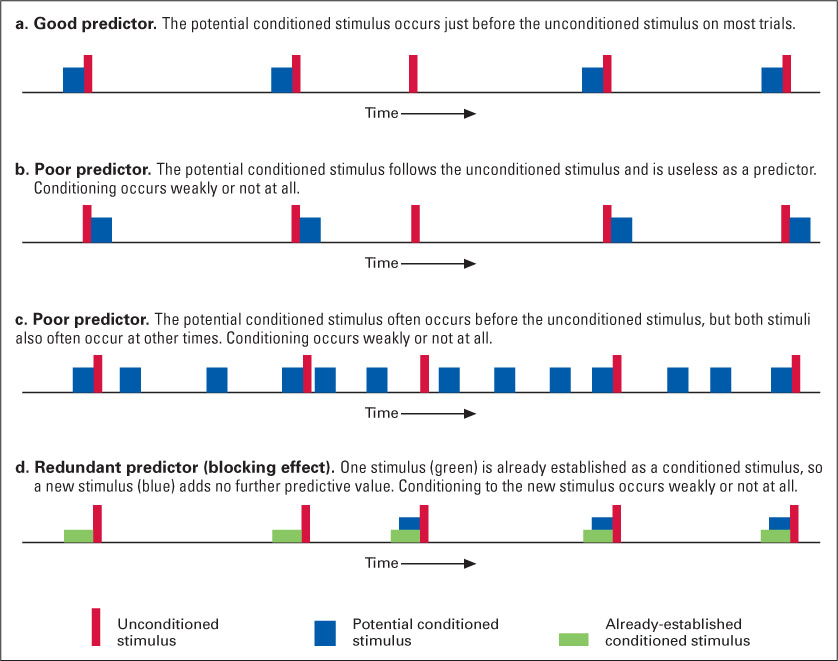
Cognitive psychologists often emphasize that their use of terms such as expectation and prediction does not imply anything mystical. The terms describe the type of information that underlies the animal’s behavior but say nothing about the physical form of that information, which presumably results from computations automatically made by neurons in the brain. Some psychologists develop computer models to explain how such computations might be made.
110
Conditioned Fear, “Liking,” Hunger, and Sexual Arousal
From a functional, evolutionary perspective, classical conditioning is a process by which individuals learn to prepare themselves, reflexively, for biologically significant events that are about to happen. A conditioned stimulus preceding a painful or startling event can elicit fear and bodily reactions that help brace the individual for that event; a conditioned stimulus preceding delivery of food can elicit hunger and bodily responses that help prepare the gastrointestinal tract for food; and a conditioned stimulus preceding an opportunity for sex can elicit high sex drive and bodily responses that help prepare the body for copulation. Here we’ll elaborate just a bit on these ideas.
Watson’s Classic Demonstration of Fear Conditioning
11
How did Watson demonstrate that the emotion of fear can be conditioned?
John B. Watson was the first psychologist to show that the emotion of fear can be conditioned in human beings. Consistent with his behavioral perspective, Watson (1924) defined fear not as a feeling but as a set of observable responses: “a catching of the breath, a stiffening of the whole body, a turning away of the body from the source of stimulation, a running or crawling from it.” On the basis of this definition, Watson found two unconditioned stimuli for fear in human infants—sudden loud sound and sudden loss of support (as when a baby slips out of an adult’s hands). Other stimuli, he argued, come to elicit fear as a result of conditioning.
In a classic demonstration, Watson and Rosalie Rayner (1920) conditioned an 11-month-old baby named Albert to fear laboratory rats. At first, Albert played happily with a rat that was placed in front of him. To condition the fear, the experimenters struck a steel bar with a hammer to produce a loud sound just after the rat was placed in front of Albert. After two such pairings Albert exhibited moderate fear in response to the rat alone, and after four more pairings he responded with strong fear to the rat alone. Thus, in the terminology of classical conditioning, the rat had become a conditioned stimulus for fear through being paired with a loud sound, which was an unconditioned stimulus for fear. In subsequent tests, Watson and Rayner showed that Albert’s conditioned fear generalized to other furry objects, such as a rabbit (see Figure 4.6).

You might (quite appropriately) wonder about the ethics of this experiment. The experiment most likely would not be approved by a modern ethics review committee and would not be allowed today. In fairness to Watson, however, there is no reason to believe that Albert’s experience in this demonstration was any more frightening than are the countless startling events that everyone experiences in the normal course of growing up. Moreover, Watson was far more interested in how to eliminate unwanted fears than in how to produce them.
Fear, of course, is not the only emotional response that can be conditioned through Pavlovian procedures. When beer, cigarette, and car advertisers pair their products with scenes of beautiful people having wonderful times, they are trying to get you to drool with anticipated pleasure, like Pavlov’s dogs, whenever you see their products.
111
“Liking”
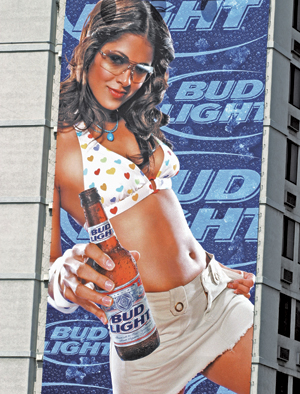
People acquire preferences for (and against) things throughout life. Some preferences seem to be instinctive—or, to use the term we introduced in Chapter 3, species-typical—such as the human preferences for sweet flavors and social stimulation. Most, however, are learned; and this learning seems to occur primarily through classical conditioning. Evaluative conditioning refers to changes in the strength of liking or disliking of a stimulus as a result of being paired with another positive or negative stimulus. Modern research is based on a study by A. B. Levey and Irene Martin (1975), in which college students were shown picture postcards and asked to select their two favorite and their two least favorite. These cards served as the unconditioned stimuli. They were then paired with neutral cards (the conditioned stimuli)—some with the “liked” cards and others with the “disliked” cards—and the subjects were later asked to rate the cards again. The researchers found that subjects’ ratings for the neutral cards changed as a function of which cards they had been earlier paired with: Cards paired with the “liked” pictures were rated more positively than before, and cards paired with the “disliked” pictures were rated more negatively than before. This effect, using variants of this procedure for a wide range of stimuli, has been reported in hundreds of studies (De Houwer et al., 2001; Hoffman et al., 2010). It suggests that our likes and dislikes, which motivate much of our behavior, are governed to a significant degree by classical conditioning.
Conditioned Hunger
12
How can the appetizer effect and sudden cravings for specific foods be explained in terms of classical conditioning?
A signal that reliably precedes food becomes a conditioned stimulus not just for salivation, but for a whole set of responses that help prepare the body for food and induce a state of hunger: the secretion of digestive juices into the stomach, the secretion of certain hormones into the bloodstream, and so on (Woods et al., 2000). Thus, we find in humans the well-known appetizer effect. The taste of a small morsel of food, the smell of food, a dinner bell, a clock indicating that it is dinnertime, or any other signal that reliably precedes a meal can rather quickly cause us to feel much hungrier than we were feeling just before the signal. Other animals, too, begin to act as if they are hungry, as indicated by their food-seeking behavior, when subjected to stimuli that have preceded food in the past (Pavlov, 1927/1960).
In cases where a conditioned stimulus always precedes a specific kind of food, the conditioned hunger that occurs may be specific for that food. For example, in one series of experiments, rats that were made hungry through food deprivation underwent conditioning in which a tone always preceded the delivery of a certain kind of food. Later, when they were not food deprived, they would seek out and eat that same kind of food, but not other foods, when the tone sounded (Petrovich & Gallagher, 2007). The rats behaved as if the tone elicited a sudden craving for the specific food with which it had previously been paired when they were hungry. Such findings help us understand why those golden arches of McDonald’s, spotted on road signs, can cause a sudden craving for precisely the kinds of foods that we have previously eaten at McDonald’s. Purveyors of fast foods are capitalizing on classical conditioning when they plaster the environment with specific symbols that are associated over and over again with their specific foods.
Conditioned Sexual Arousal
13
How has sexual arousal been conditioned in humans and other animals? What is the evidence, from experiments with nonhuman animals, that such conditioning promotes success in reproduction?
A number of experiments have demonstrated that sexual arousal can be conditioned in nonhuman (Pfaus et al., 2012) and human subjects (Both et al., 2011; Hoffman, 2007). Typically, a previously neutral stimulus is used as the conditioned stimulus (a photo showing a jar of pennies was used in one experiment) and an erotic, sexually arousing film clip or sexually arousing vibration applied mechanically to the genitals is used as the unconditioned stimulus. Sexual arousal is measured in men by a strain gauge that indicates erection of the penis and in women by a device that responds to increased blood flow to the vagina. In such experiments, a stimulus that initially does not elicit arousal comes to elicit it after several pairings with the unconditioned stimulus.
112
Experiments on sexual conditioning in nonhuman animals have generally used males as subjects and either the sight of a sexually receptive female or physical access to such a female as the unconditioned stimulus. The usual result is that a signal that reliably precedes the presentation of the female becomes a conditioned stimulus for a set of responses that help prepare the male for courtship and mating (Domjan, 2003; Pfaus et al., 2012). Experiments have shown that such conditioning is biologically adaptive in the most direct sense of the term—it increases the number of offspring the animal produces.
In one experiment with a fish called the blue gourami, males were conditioned, over several trials, to predict the arrival of a female when a signal light came on (Hollis et al., 1997). After conditioning, these fish responded to the signal by shifting rapidly from their normal mode of behavior, which is quite aggressive, to a non-aggressive courtship mode. When they were allowed access to a female after the signal, the conditioned males were much more successful in courtship than were the unconditioned males, primarily because the latter typically attacked the female before trying to court her. The biological payoff was that the conditioned males fathered many more offspring in these tests than did the unconditioned males.
In a similar experiment with domesticated quail, those male birds that received a conditioned stimulus prior to the opportunity to copulate with a hen fathered many more offspring than did those who were presented with a hen without forewarning (Matthews et al., 2007). In this case, the improved fertilization rate apparently resulted from an increase in the number of sperm cells released by the male birds during ejaculation. The conditioned stimulus apparently mobilized the sperm-release mechanism prior to the presentation of the hen so that more sperm were available at the time of copulation.
Conditioned Drug Reactions
As you have just seen, bodily reactions associated with natural emotions and drives can be conditioned. In their early experiments, Pavlov’s group showed that bodily reactions to drugs can also be conditioned. In one demonstration with a dog, they paired a tone with injection of a drug that elicited restlessness and vomiting. After repeated pairings, the dog began to exhibit those responses to the tone alone (Pavlov, 1927/1960). Since then, many experiments have shown that drug reactions can be conditioned. Researchers have found, for example, that for habitual coffee drinkers the mere smell and taste of coffee can produce increased alertness, apparently because of the previous pairings of that smell and taste with the effects of caffeine (Flaten & Blumenthal, 1999).
Conditioned Compensatory Reactions to Drugs
14
Why is the conditioned response to a drug-related stimulus often the opposite of the direct effect of the drug?
Many drugs produce two effects: a direct effect followed by a compensatory reaction that counteracts the direct effect and tends to restore the normal bodily state. In such cases it is often found (for reasons to be explained shortly) that only the compensatory reaction becomes conditioned. As a result, a stimulus that reliably precedes delivery of the drug produces a conditioned response that is opposite to the drug’s direct effect. An example of such a drug is morphine. A direct effect of morphine is reduction in sensitivity to pain, but this is counteracted by reflexive responses in the body that tend to restore normal pain sensitivity. When rats are repeatedly injected with morphine in a distinctive environment, that environment becomes a conditioned stimulus for the counteractive response. When the rats are subsequently placed in that environment without morphine, the conditioned reaction occurs in the absence of the direct effect of the drug. The result is that the rats become temporarily hypersensitive to pain (Hinson et al., 1986).
The explanation of such effects rests on the fact that only responses that occur in a reflexive manner, involving the central nervous system (spinal cord and brain), can be conditioned (Siegel, 1999). The direct effects of some drugs are not reflexes and therefore cannot be conditioned, but the counteractive effects are reflexes. As an analogy, consider what would happen if a bell sound (conditioned stimulus) reliably preceded a shove from the front (unconditioned stimulus). The shove would tend to push you backward, but you would counter that with a reflexive movement forward. Only the reflexive movement forward would be conditioned, so if the bell were sounded without the shove, you might fall on your face—a reaction opposite to the direct (nonreflexive) effect of the shove. The body protects itself with counteractive reflexes to all sorts of interventions (such as shoves and drugs) that disrupt its normal functioning. The conditioning of such reflexes is normally useful because it allows the counteraction to begin even before the potentially harmful stimulus strikes.
113
Conditioned Reactions as Causes of Drug Tolerance
15
How does classical conditioning contribute to the development of drug tolerance? Why is it dangerous for a drug addict to take his or her usual drug dose in an unusual environment?
Shepard Siegel and his colleagues in Canada have shown that the phenomenon of drug tolerance depends at least partly on conditioning. Drug tolerance refers to the decline in physiological and behavioral effects that occur with some drugs when they are taken repeatedly. Because of tolerance, people who regularly take a drug have to increase their doses over time to continue to achieve the original effects. To some degree, tolerance is a result of long-term buildup of physiological systems in the body that help to counteract the drug’s effects (Poulos & Cappell, 1991). However, it is also to some degree the result of conditioning. Because of conditioning, stimuli that normally precede drug intake cause the conditioned compensatory reaction to begin before the drug is actually taken, and that reaction counteracts the direct effect of the drug. For example, a conditioned increase in heart rate would counteract the effect of a drug whose direct effect is to slow the heart.

Siegel and his colleagues have found that many cases of “overdose” in heroin addicts are actually cases in which addicts took their usual drug doses in unusual environments (Siegel, 1984; Siegel & Ramos, 2002). When an addict takes a drug in the usual drug-taking environment, cues in that environment produce a conditioned compensatory reaction that allows the addict’s body to tolerate a large dose of the drug. If the addict takes the same amount of the drug in a novel environment, where the conditioned cues aren’t present, the full impact of the drug kicks in before a counteractive reaction begins, and the result is severe illness or death. Consistent with this interpretation, rats that had received many morphine injections in a specific highly distinctive cage were much more likely to survive a high dose of the drug if it was given to them in that same cage than if it was given in a different setting (Siegel, 1976, 2005). Similar effects have been shown in animal experiments using alcohol (Melchior, 1990) and various other drugs (Goudie, 1990).
Conditioned Reactions as Causes of Drug Relapse After Withdrawal
16
How does classical conditioning help explain drug relapse after an addict returns home from a treatment center?
Another drug phenomenon that is at least partly explained by conditioned compensatory reactions is that of relapse by addicts who have undergone periods of drug withdrawal (Siegel, 1999). Many addicts withdraw from drugs during a stay at a residential treatment center that is quite unlike their home environment. After some period of drug-free living at the center, they no longer experience withdrawal symptoms or feel a craving for the drug. However, when they return to their own homes and neighborhoods, they are once again surrounded by many cues that, for them, are associated with drug use. These cues elicit compensatory drug reactions, which feel like withdrawal symptoms and elicit a strongly felt need for the drug—a felt need that is all too often irresistible.
In an effort to prevent such relapse, some drug treatment programs attempt to extinguish the effects of conditioning by repeatedly presenting addicts with stimuli associated with drug intake without the drug itself. Such programs have met with only partial success, however (Siegel & Ramos, 2002). It is impossible to identify and present all of the cues that have become conditioned stimuli for compensatory drug reactions for each addict in his or her home environment. Moreover, as you recall, effects of extinction can be quickly undone. Even one exposure to the unconditioned stimulus (the drug, in this case) can renew the conditioned responses to cues associated with it.
114
An addict’s best hope for overcoming a long-term addiction may be to move permanently, if possible, to an entirely new environment. During the Vietnam War, many American soldiers became addicted to heroin in Vietnam. When they returned home, a surprisingly large number overcame their addiction immediately and never took heroin again (Robins et al., 1975). According to Siegel’s analysis, this observation makes sense in view of the fact that they had left behind the cues that had become triggers for drug compensatory reactions and returned to an environment that contained none or few of those cues (Siegel, 1999).
SECTION REVIEW
Classical conditioning is the process involved in learning a new response; it enables prediction of and preparation for unconditioned stimuli.
Conditioning Procedure
- Classical conditioning begins with an unconditioned response (for example, food → salivation).
- During conditioning, a neutral stimulus (for example, bell sound) is presented just before the unconditioned stimulus (for example, food).
- After sufficient pairings, the neutral stimulus becomes a conditioned stimulus which by itself elicits a conditioned response. This is the conditioned response (for example, bell sound → salivation).
Extinction
- If a conditioned stimulus is repeatedly presented without the unconditioned stimulus, the conditioned response stops occurring.
- The conditioned response is not unlearned in extinction; it is merely suppressed, as shown by spontaneous recovery, etc.
- Conditioning and extinction apparently involve different sets of neurons, one promoting the conditioned response, the other inhibiting it.
Generalization and Discrimination
- Generalization occurs when a stimulus similar to the conditioned stimulus also elicits the conditioned response.
- Discrimination (reduced generalization) results from repeatedly presenting the unconditioned stimulus followed by the conditioned stimulus and the similar stimulus followed by nothing.
What Is Learned?
- According to the S-R theory, supported by early behaviorists, a link between the conditioned stimulus and response is learned.
- According to the S-S theory, an association between the conditioned and unconditioned stimulus is learned.
- The S-S theory implies expectancy and is supported by Rescorla’s experiment.
- Consistent with the expectancy idea, conditioning occurs best when the conditioned stimulus is a reliable predictor of the unconditioned stimulus.
Conditioned Emotion and Motivation
- Examples are the conditioning of fear (in little Albert), the conditioning of hunger (the appetizer effect), the conditioning of “liking” (evaluative conditioning), and the conditioning of sexual arousal.
- In general, conditioned stimuli trigger responses that help prepare the individual for a biologically significant event.
Conditioned Drug Reactions
- With some drugs, repeated pairing with a conditioned stimulus causes that stimulus to elicit the same type of response as the drug.
- With some other drugs, the conditioned stimulus elicits a response that is opposite to the drug response. Such conditioned compensatory reactions contribute to drug tolerance and drug relapse.